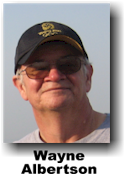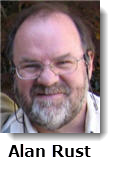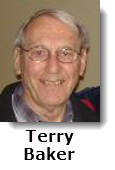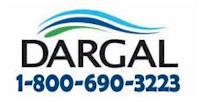 Yukon Southern Air Transport
Yukon Southern Air Transport
When I received the images for this issue from Terry one caught my interest. I had never heard of Yukon Southern Air Transport which is surprising since I am certainly familiar with the name of this airline’s founder, Canadian aviation pioneer, Grant McConachie. The expressway leading into Vancouver International Airport, Grant McConachie Way, is named in his honour.
Originally named United Air Transport, the airline carried freight and mail to remote northern areas from Edmonton with aircraft equipped with skis in the winter and floats in the summer. It was renamed Yukon Southern Air Transport (YSAT) in 1938 and expanded its service between Edmonton, Vancouver and the Yukon.
McConachie built airstrips in Fort St. John and Fort Nelson in northern BC to bring wheeled aircraft service to those communities.
The airline provided good service but never made a profit. It was acquired by Canadian Pacific Air Lines in 1941 and Grant McConachie was awarded a position on the Board of Directors. He became the president of CP in 1947 and continued to play an important role in Canadian aviation history.
Terry also provided the following list of Barkley Grow T8P-1 airliners that were acquired by CPAL.
- CF-BLV - built 1938 registered by CPAL 23/Dec/43, sold to H.R. Peats, Edmonton 28/Nov/49. The "Yukon Queen" ( pictured) is now preserved at the Alberta Aviation Museum in Edmonton, AB.
- CF-BMG - built 1939 register by CPAL 5/May/43, damaged beyond repair at Port Alberni, BC 1/Feb/47. Overturned at moorings.
- CF-BMW - built 1939 registered by CPAL 8/Jan/43, sold to Associated Airways, Edmonton, AB, 8/Dec/49.
- CF-BQM - built 1940 registered by CPAL 1942, sold to Associated Airways, Edmonton, AB, 20/Mar/50 is now preserved at the Hangar Flight Museum in Calgary, AB.
- CF-BTX - buily 1940 registered by CPAL 2/Dec/43, damaged beyond repair at Lake Porcupine, AB 19/Oct/45 Engine failure after take off.
- CF-BVE - built 1937 ex Prairie Airways 2/Nov/42, sold to F. Ambrose, Long Island NY, Feb/45.
Sources and additional information:
www.royalaviationmuseum.com
www.alaskahighwayarchives.ca
www.explorenorth.com
Barkley-Grow T8P-1 at Wikipedia
Canadian Pacific Airlines: Its History and Aircraft by D.M. Bain
(thanks to Arne Pederson)
 1950s Photos Reveal How Babies Travelled On Airplanes In The Past
1950s Photos Reveal How Babies Travelled On Airplanes In The Past
(From Bored Panda - www.boredpanda.com)
and NL reader Diane Bellamy
According to rare photos from 1953, attempts to provide the best flying experience included awesome engineering solutions for the youngest travelers!
As official vintage photographs suggest, British Overseas Airways Corporation (BOAC) went the extra mile to ensure customer satisfaction. BOAC (the predecessor of British Airways) had developed hammock-like “skycots” for babies, travelling long-distance. If needed, these skycots would be attached to the luggage rack, allowing the infant to sleep comfortably and safely (the design of the cot prevented them from falling out). However, the child had to be held by a parent for take-off and landing; the same practice continues to this day.
Although today’s airlines provide similar bedding for babies, most of them attach to the bulkhead instead. Click on image below for more photos or visit www.boredpanda.com/vintage-infants-airplane-skycot-boac-flights
So, if you think the image above may have been a bit primitive and unsafe, the photo below shows how some mothers handled the same issue in London in the 1930's. The cages were designed in a more innocent age and with the best of intentions. With this wire enclosure, parents didn’t need to leave the house to give their children a healthy dose of sunshine and fresh air. The only problem was that the cage was suspended precariously off the side of a building.
For the story and other images follow this link
or click on the image above.
|
IMPORTANT NOTICE The Government of Canada has introduced a new entry requirement for those travelling to or through Canada who are not Canadian or American citizens, or permanent residents of Canada. You may require an Electronic Travel Authorization (eTA). For more information, consult www.canada.ca/eta to determine if this requirement applies to you. Food for thought! Delta brings back main cabin meal service on 12 domestic routes. Delta Air Lines will begin including meals at no extra cost for all main cabin seats on 12 transcontinental domestic routes this spring, reversing a longstanding trend of US airlines not including meal service with economy-class tickets on domestic flights. When 1,364 Canadian Boy Scouts flew to England between July 17- 29th 1957 to attend the "Jubilee J-I-M" world scout gathering at Sutton Coldfield, Warwickshire a new record for mass air lifts from Canada to the U.K. was established. Trans-Canada Air Lines handled the arrangements whereby 15 planes, with passenger capacities ranging from 60 to 114 carried the Canadian scouts to and from Britain. Aircraft used were the DC-4 of Maritime Central Airways, Super Constellation of Flying Tigers Airlines. Scouts from BC and Alberta were handled by Canadian Pacific Airlines over their "Polar Route" utilizing DC-6B's. (Source The News and Eastern Townships Advocate July 25th, 1957) |
|
|
Cruises: Rates are quoted in U.S. dollars per person (based on double occupancy). For more information on these & many other Dargal Interline specials: |
Jack Morath, the Social Director of the LHR Pionairs, received this message from Colin Hare who used to work in Maintenance here on the North side some years ago. He is now living in France and has asked me to put an item in our (LHR) newsletter which I will do, and also suggested that he gets in touch with your NetLetter colleagues to receive it.
Colin says that whilst working in the workshops on the North side at LHR someone brought in an aircraft engine from a German Second World War aircraft. He believes it came from Holland. He cleaned off all the sand and it was sent to Canada and believes it went in an office lobby in Montreal. It was very badly damaged and the front cylinders were nearly flat. As you went down the bank of cylinders they got more oval and eventually the rear cylinders were perfectly round.
The story that went round was that a TCA (Air Canada) pilot during the war claimed a hit, but was never awarded it because they couldn't find the aircraft. Colin gave the Dutch aircraft history researchers a rough idea of where he thought it had hit the ground and eventually they dug it out. After finding the aircraft parts he was then awarded the hit.
Colin would really like to know if anybody could remember this as he didn't take any pictures. He thinks it was about thirty years ago but is only guessing. Colin would also like to know if the engine might still be located within the Air Canada offices somewhere in Montreal.
(If anyone has any information regarding this incident please let us know at the NetLetter and we will pass on the details to Colin - eds)
BA issues an Anti-Corrosion plea -
We often wonder why there are so many rules governing everyday life but some British Airways ramp attendants have provided an example. The airline this week had to remind workers at London Heathrow to please not urinate in the cargo holds of its aircraft rather than hike back into the building to a washroom.
(Source AVwebFlash Mar 2/17)
If you are reading this NetLetter and reside in New Zealand, Norman Hogwood would like to hear from you at this e-mail address
|
Brooklands Museum, Surrey, UK. Strictly speaking, it’s still possible to take a spin along stretches of the historic 4.4-kilometre circuit at Brooklands, southwest of London. When it opened in 1907, it was the world’s first purpose-built racetrack for cars. During the Second World War, however, the site was used for military aircraft production, and Brooklands never hosted another race after 1939. A new, smaller circuit has been built inside the original massive oval, sections of which have become overgrown with trees and weeds. Brooklands was the home of the Vickers Viscount and Vanguard amongst many other aircraft types. |
|
 |
 |





